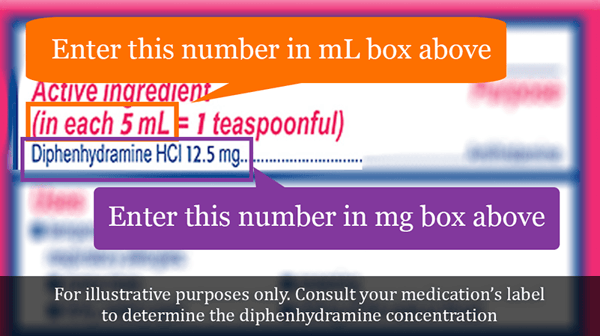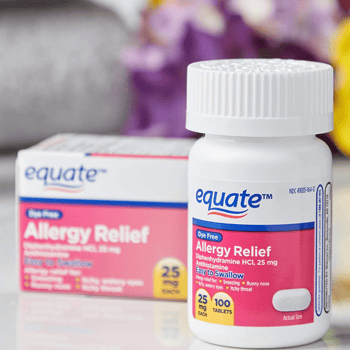Our mission is to help save dogs' and cats’ lives through our educational content. To support our efforts, this page may contain affiliate links. We earn a commission for qualifying purchases – at no cost to you.
Before using a Benadryl® dosage chart or giving your dog or cat diphenhydramine, be sure to speak to a veterinarian. Let them know if your pet is on any other medications, including vitamins, supplements, and herbal formulations. It is important to be aware that some animals are hypersensitive to diphenhydramine and, especially if this is your first time administering this medication to your pet, monitor them closely following administration.
To calculate the Benadryl dose for dogs and cats, use the appropriate calculator – based on tablet or liquid medication. The dosage is calculated by the weight of your dog or cat. For instructions on how to use the calculator, see below.
Important Warning: Whether using the tablet or liquid form of Benadryl®, make sure it does not have any other ingredients. The only ingredient should be Diphenhydramine. See more warnings below.

PRO TIP: If your dog is difficult to give pills to, consider using a pill popper. Pill pockets are also a good option, but if your dog's face or throat is swollen, swallowing a pill pocket may be uncomfortable.
To calculate your dog or cat's dosage in tablet form, enter their weight in the pill calculator further below. Give them a dose that falls within the minimum to maximum range, using whatever combination of whole and half pills it takes to get you to a dose within the dose range you've just calculated.
You do want to look at the medication box to find out how many milligrams (mg) of diphenhydramine are in each pill or tablet. Diphenhydramine pills are typically 25 mg each, but there are smaller 12.5 mg tablets and larger 50 mg tablets. You can adjust the tablet dosage in the calculator below to help you determine how many tablets to give within their dosage range.
Important Warning: Whether using the tablet or liquid form of Benadryl®, make sure it does not have any other ingredients. The only ingredient should be Diphenhydramine. See more warnings below.
For liquid dosages, determine the concentration of diphenhydramine based on the medication's label (use the illustration above as a guide) and enter those values and your pet's weight into the Diphenhydramine Liquid Dosage Calculator.
Diphenhydramine has several uses that make it a good medication to keep in a pet’s first aid kit. The following is a list of the more common issues this antihistamine is used for:

